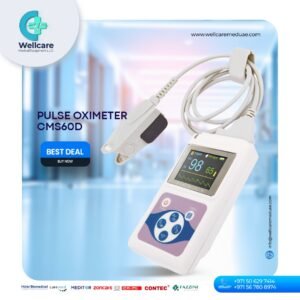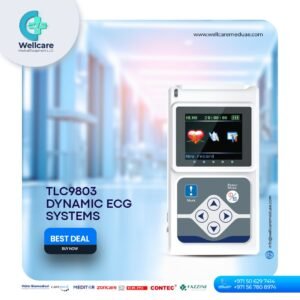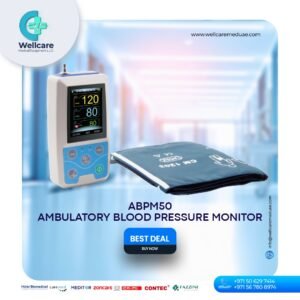Defibrillator Equipment supplier in Kenya
Defibrillator equipment holds significant importance in Kenya, particularly due to the rising incidence of cardiovascular diseases, including heart attacks and sudden cardiac arrests. These conditions demand immediate medical intervention, and defibrillators provide a crucial response by restoring normal heart rhythms in the critical moments following a cardiac event. The increasing urbanization, lifestyle changes, and a growing aging population in Kenya contribute to a higher prevalence of these cardiac emergencies. Having defibrillators readily available in public places like airports, malls, schools, and sports facilities ensures that help can be administered promptly, dramatically increasing the chances of survival. Moreover, the presence of defibrillators not only saves lives but also raises public awareness about the importance of cardiac health and encourages community training in basic life support (BLS) and the use of automated external defibrillators (AEDs). Additionally, defibrillator equipment supports Kenya's healthcare infrastructure by equipping hospitals, clinics, and health centers to effectively manage in-hospital cardiac emergencies. This capability is crucial for improving patient outcomes and reducing the economic burden associated with prolonged hospital stays and complex medical treatments for untreated cardiac arrests. Community-based programs and government initiatives aimed at increasing the availability and training for defibrillators contribute to higher survival rates and better overall health outcomes. Non-governmental organizations (NGOs) also play a pivotal role by funding and supplying defibrillators and providing training in their use, thus bridging gaps in public health resources. Overall, the integration of defibrillators into Kenya’s healthcare system and public spaces is a vital step in enhancing emergency preparedness, improving survival rates from cardiac events, and promoting a healthier population.
Defibrillator equipment is crucial in Kenya for several reasons, primarily related to the management of cardiovascular emergencies and improving overall public health outcomes. Here are some key points:
1. Increasing Incidence of Cardiovascular Diseases
- Rising Health Concerns: Cardiovascular diseases (CVDs) are on the rise in Kenya, mirroring global trends. Conditions like heart attacks and sudden cardiac arrests are becoming more prevalent due to lifestyle changes, urbanization, and increased life expectancy.
- Early Intervention: Defibrillators play a critical role in the immediate response to cardiac emergencies, particularly in public places, healthcare facilities, and during emergency medical services.
2. Life-Saving Technology
- Immediate Response: Sudden cardiac arrest (SCA) requires immediate medical intervention. Defibrillators can restore normal heart rhythms within minutes, significantly increasing survival rates.
- Accessibility: Having defibrillators readily available in high-traffic areas such as airports, malls, schools, and sports facilities ensures quick response times and improves the chances of survival.
3. Public Health and Safety
- Public Awareness: The presence of defibrillators raises public awareness about cardiac health and encourages community training in basic life support (BLS) and the use of automated external defibrillators (AEDs).
Emergency Preparedness: Equipping public and private spaces with defibrillators is part of a broader strategy to enhance emergency preparedness and response capabilities in Kenya.
4. Supporting Healthcare Infrastructure
- Medical Facilities: Hospitals, clinics, and health centers benefit from advanced defibrillator equipment to manage in-hospital cardiac emergencies effectively.
- Training and Education: Incorporating defibrillator training in medical and paramedical education ensures that healthcare professionals are equipped with the necessary skills to handle cardiac emergencies.
5. Improving Survival Rates
- Rapid Defibrillation: The timely use of defibrillators is associated with higher survival rates in cases of cardiac arrest. Studies have shown that survival rates decrease by 7-10% with each minute that defibrillation is delayed.
- Community Programs: Community-based programs promoting the availability and use of defibrillators contribute to higher survival rates and better outcomes for cardiac arrest victims.
6. Economic Impact
- Cost-Effective: Investing in defibrillators and training programs is cost-effective in the long run, reducing the economic burden of prolonged hospital stays and complex medical treatments associated with untreated cardiac arrests.
- Healthcare Savings: Preventing deaths and severe disabilities from cardiac events can lead to significant savings in healthcare costs.
7. Government and NGO Initiatives
- Policy Support: Government policies and initiatives aimed at improving cardiac care infrastructure, including the installation of defibrillators, are vital in enhancing public health outcomes.
- Non-Governmental Organizations: NGOs play a significant role in funding, supplying, and training communities in the use of defibrillators, bridging gaps in public health resources.
In summary, defibrillator equipment is essential in Kenya to combat the rising incidence of cardiovascular diseases, improve emergency response, enhance public health and safety, and support the healthcare infrastructure. Their importance cannot be overstated in saving lives and improving health outcomes.




